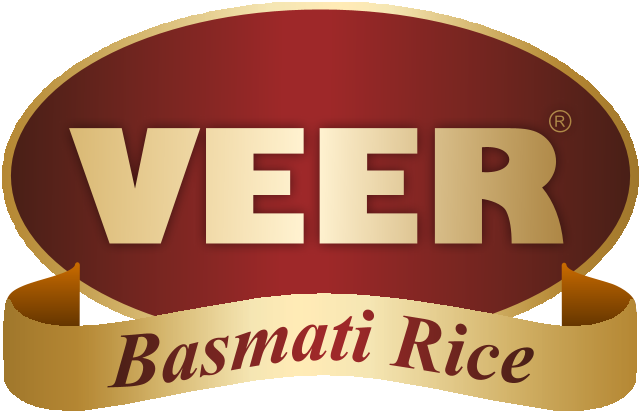Here, we’ll discuss the key differences between basmati rice and long-grain rice kinds. You can distinguish between these two types of rice using it.
Long Grain Rice and Basmati Rice
1. The Form
The tips of basmati rice are sharp and tapered. Compared to other long-grain rice, basmati rice is shorter while uncooked, but it doubles in size after cooking.
The long-grain rice is substantially longer and has a cylinder-like form on both ends. Therefore, looking at the ends of the rice, you can tell the difference between Basmati rice and long grain rice.
2. Size and Size Changes During Cooking
The differences between long-grain and basmati rice are obvious. The average size of basmati rice is 6.61 millimeters. On the other hand, the size of long grain rice stays between 7-9 millimeters.
The Indian-origin basmati rice has the unique property of expanding to twice or three times its original size when cooked. When cooked, long grain rice swells even more. Long-grain rice has a length three to five times greater than its breadth when uncooked.
3. The Scent
The scent of the two types of rice varies, which is one of their key distinctions. A person’s hunger is stimulated by the lovely aroma of basmati rice, which permeates the entire house.
The aroma of other long-grain rice cultivars is not the same. Basmati rice is similar to jasmine rice, yet jasmine rice has a different fragrance.
4. Uses
You can prepare pulao, jeera rice, masala rice, tadka rice, and other delicacies with basmati rice. You may even serve curries and salad with plain basmati rice.
Other long-grain rice varieties may be used in recipes, including Jeera Rice, Matar Rice, Jeera Rice, Fried Rice, and Pulao.
5. Price
The price difference between the rice varieties is an intriguing comparison point. Since basmati rice is the most widely consumed, market demand is higher. It is typically more affordable than other rice kinds but is more commonly bought.
Additionally, the fact that basmati rice is a local product contributes to the price discrepancy. The best basmati rice is cultivated in Northern India. However, it is produced in a few areas. Because of its restricted availability and geographical distinctiveness, basmati rice has higher costs.
What are the uses of Long-grain rice?
Long-grain rice has a wide range of applications. Since it has no particular flavor, it is the best option for crafting savory and sweet foods.
1. For dessert
Rice can be utilized for stuffing the turkey, beef, and ground pork. This rice may be seasoned, giving the food a lovely and distinctive flavor. Numerous sweets may be made using rice. For instance, the rice Kheer, a traditional sweet delicacy, is among the most popular sweets.
2. As rice casseroles
One-dish comfort food that is delicious is rice casseroles. Add the chicken to the dish along with additional ingredients like onions, mushrooms, and broccoli. To prepare the dish for cooking, cover it with cheddar cheese that has been shredded.
3. During breakfast
A typical breakfast meal is Sinangag, a bowl of white, long-grain rice sautéed with garlic, soy sauce, green onions, and scrambled eggs. Although it’s often served for breakfast, it’s frequently made in significant quantities as a side dish later in the day.
What are the uses of Basmati Rice?
A specific variety of long-grain rice is called basmati. Basmati rice is used in most well-known cuisines from the Indian subcontinent.
2. Biryani
The biryani dish is made using basmati rice. All types of biryani, including those from Mumbai, Sindh, Hyderabad, Calcutta, and Lucknow, are prepared with basmati rice.
3. Rice with Chicken Schezwan
Basmati rice is used in a variety of cuisines outside just Indian food. Basmati rice is used in one of the most popular Indo-Chinese cuisines, chicken Schezwan rice. To make this meal, take the rice you wish to use and sauté it with the chicken, soy, vinegar, shrimp, chili sauce, celery, and mushrooms.
4. Gulab Phirni
One of the best rice-based sweet meals is this one. It is a preferred meal for festivities and special events. This recipe calls for basmati rice, cardamom, milk, saffron, and rosewater as components.
Final Words:
This article aims to explain the difference between long-grain rice and basmati rice. Compared to long-grain rice, it has a lower glycemic load. Basmati appears to have the lowest glycemic load of any long-grain rice. Therefore, basmati rice would seem to be the greatest option in terms of glycemic load, with long-grain rice being at the opposite end of the scale.




